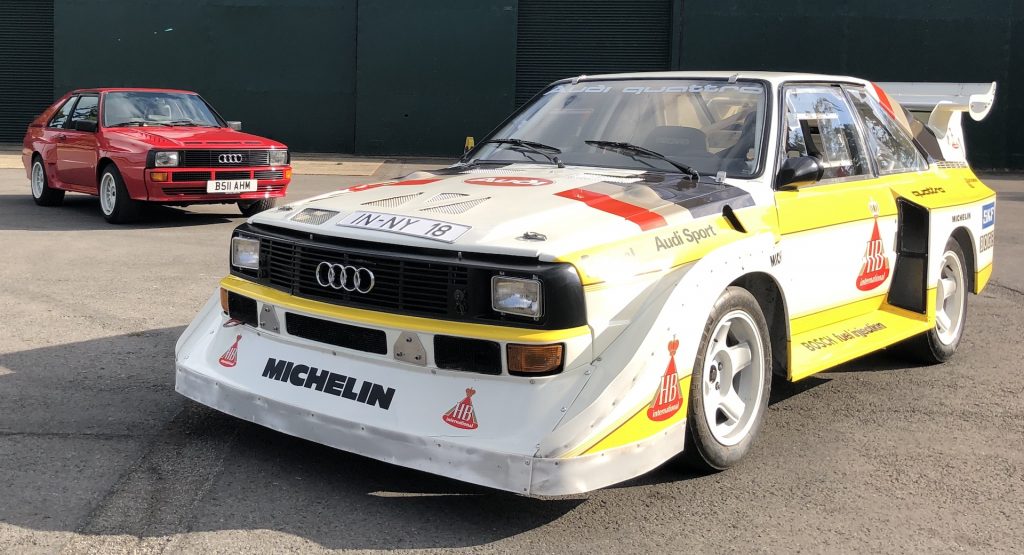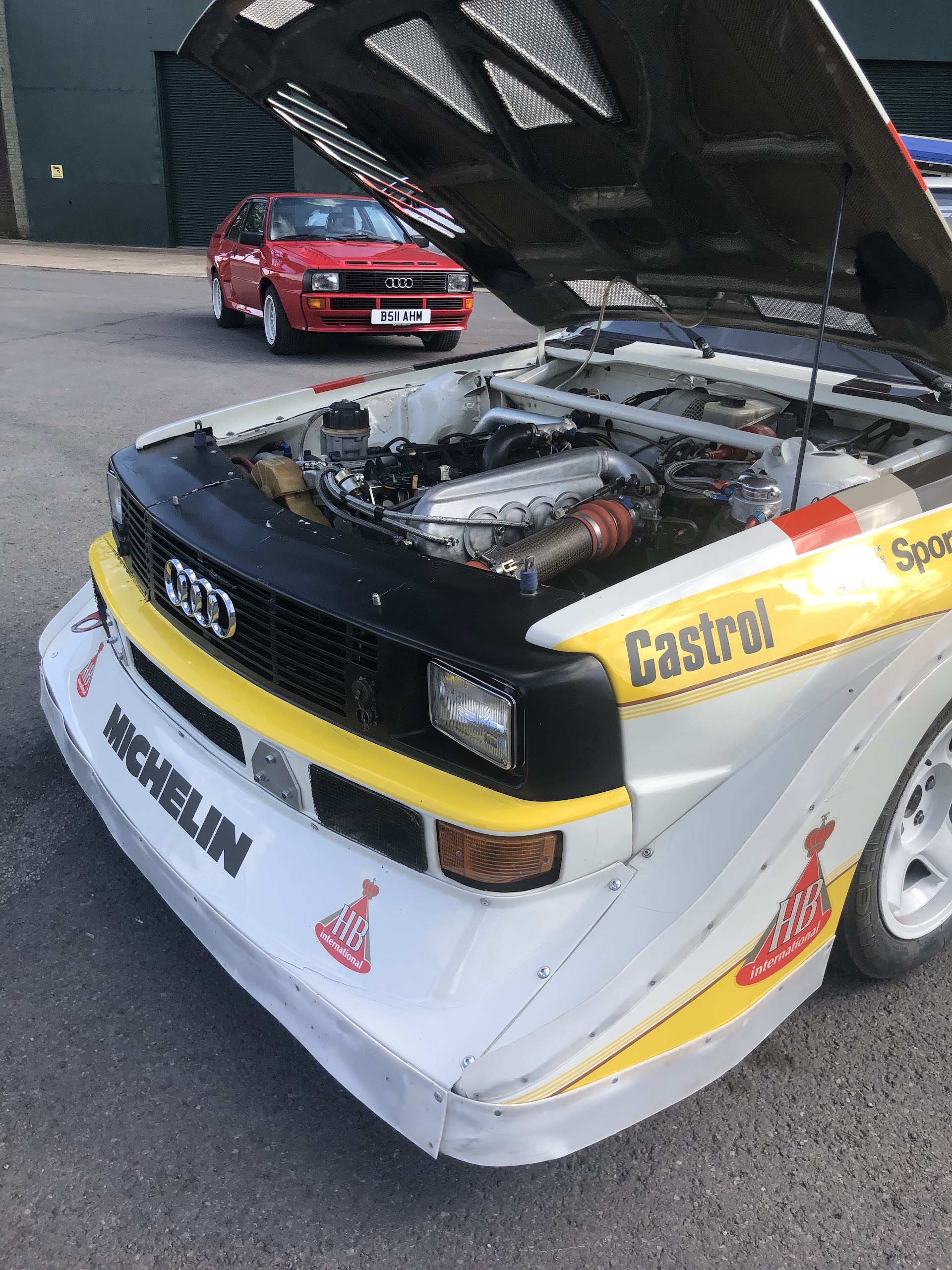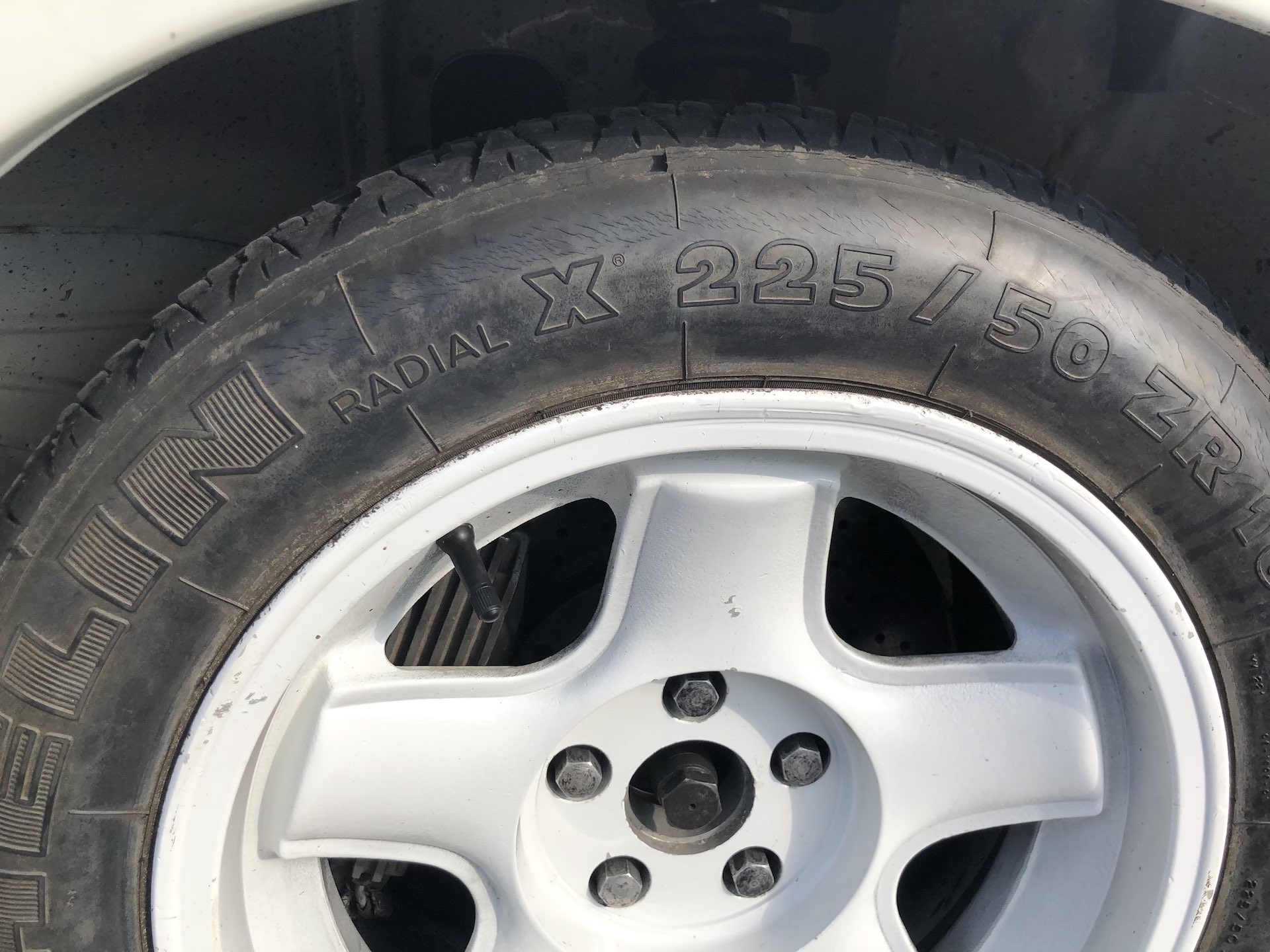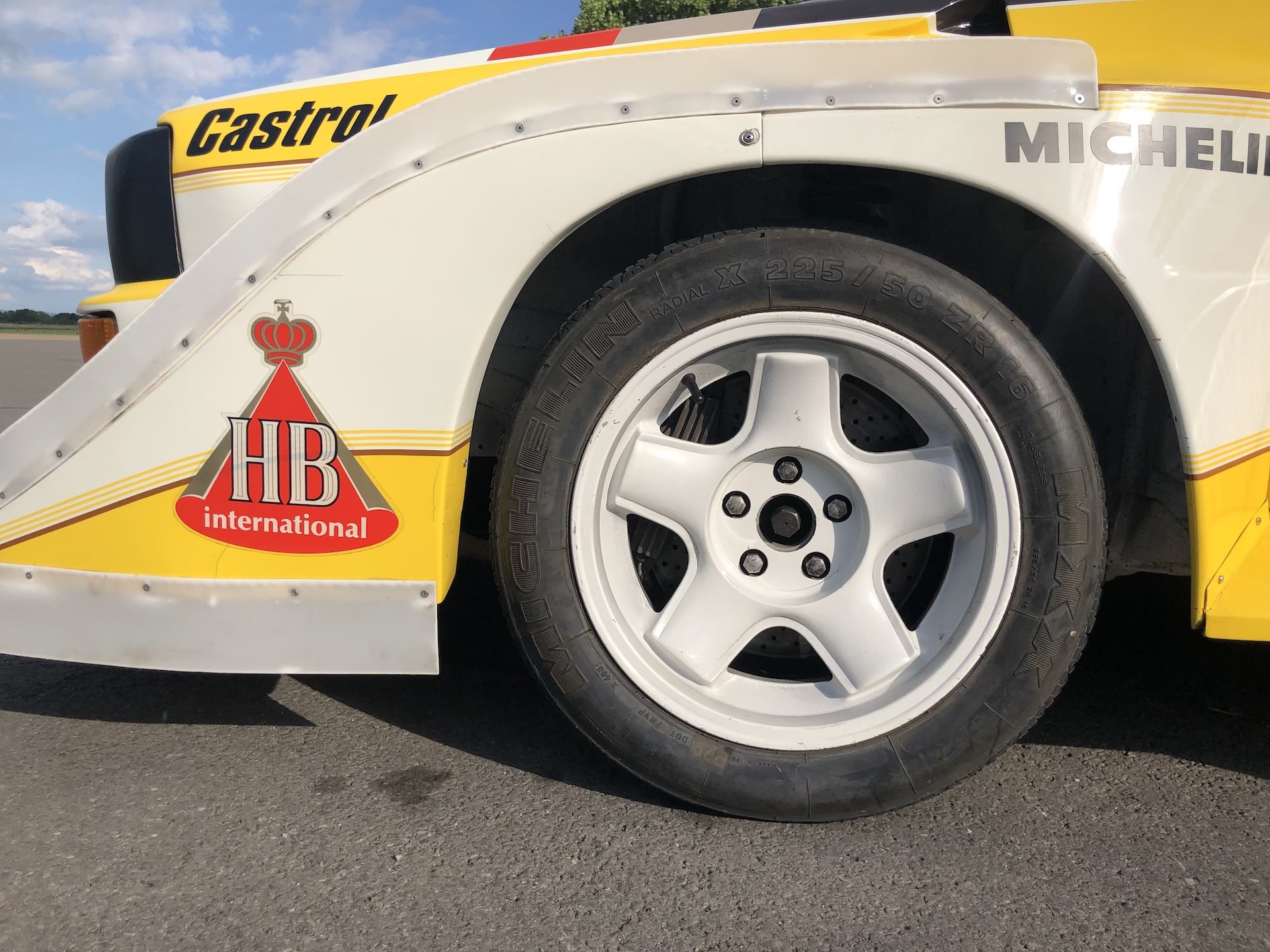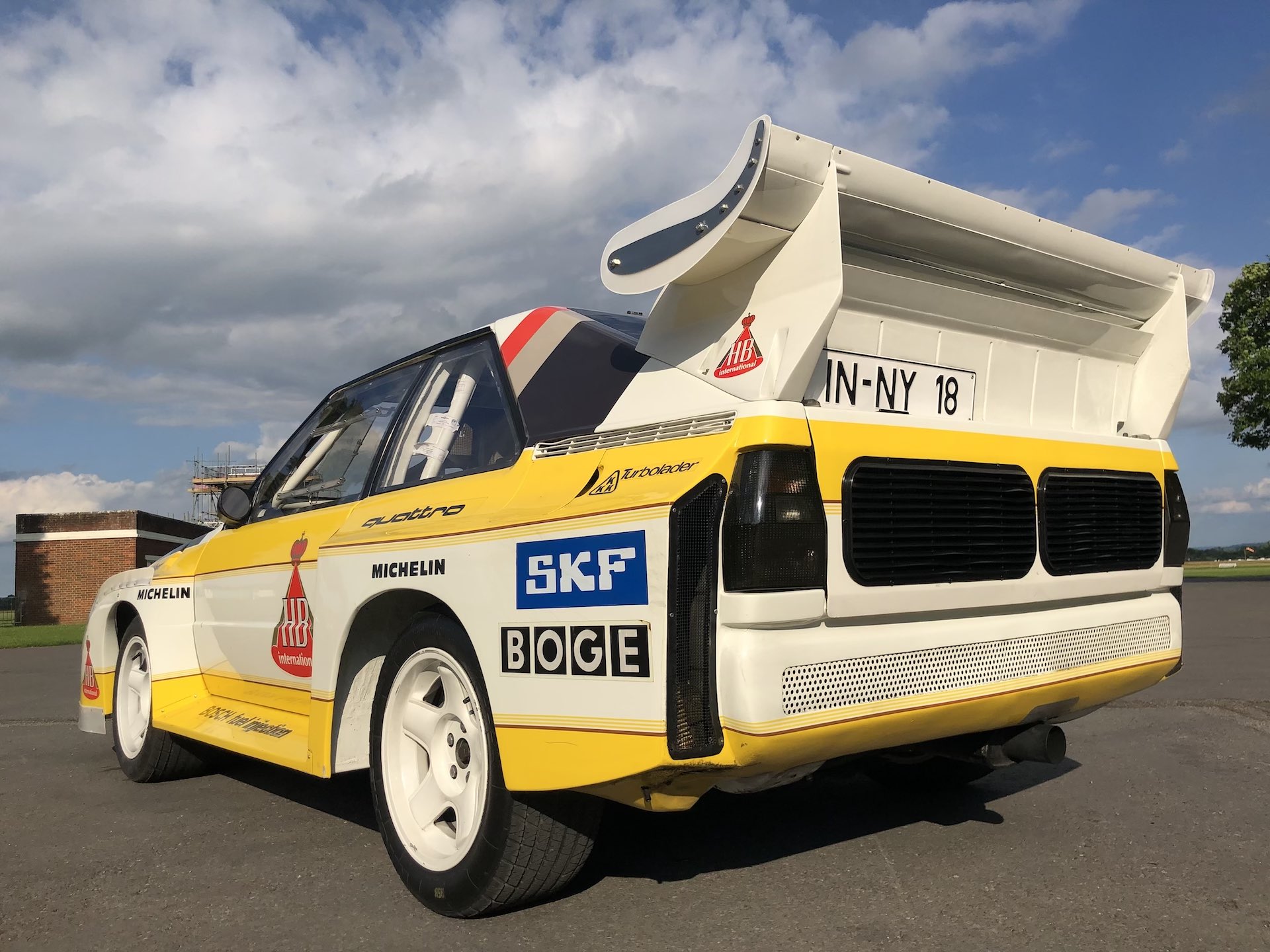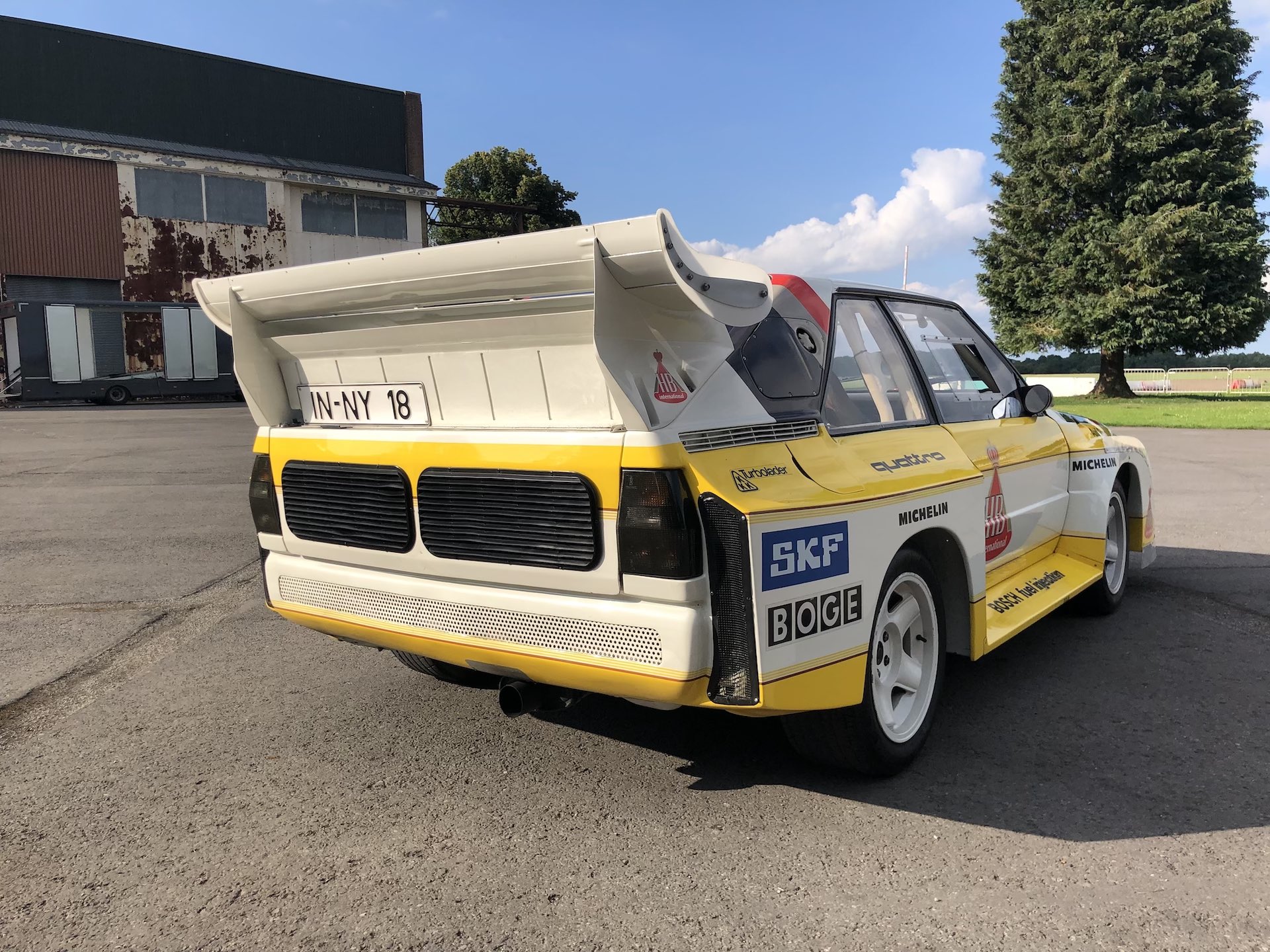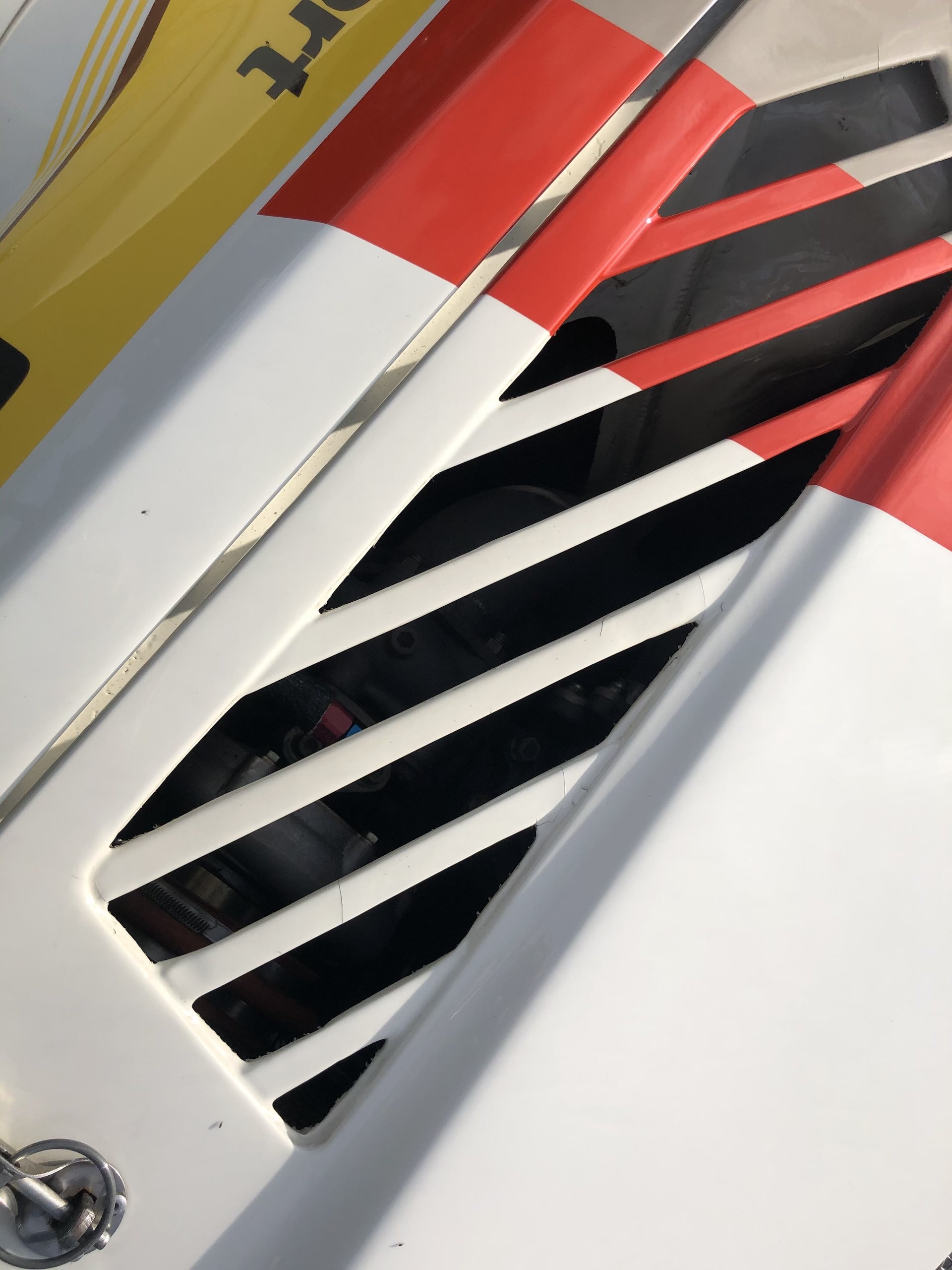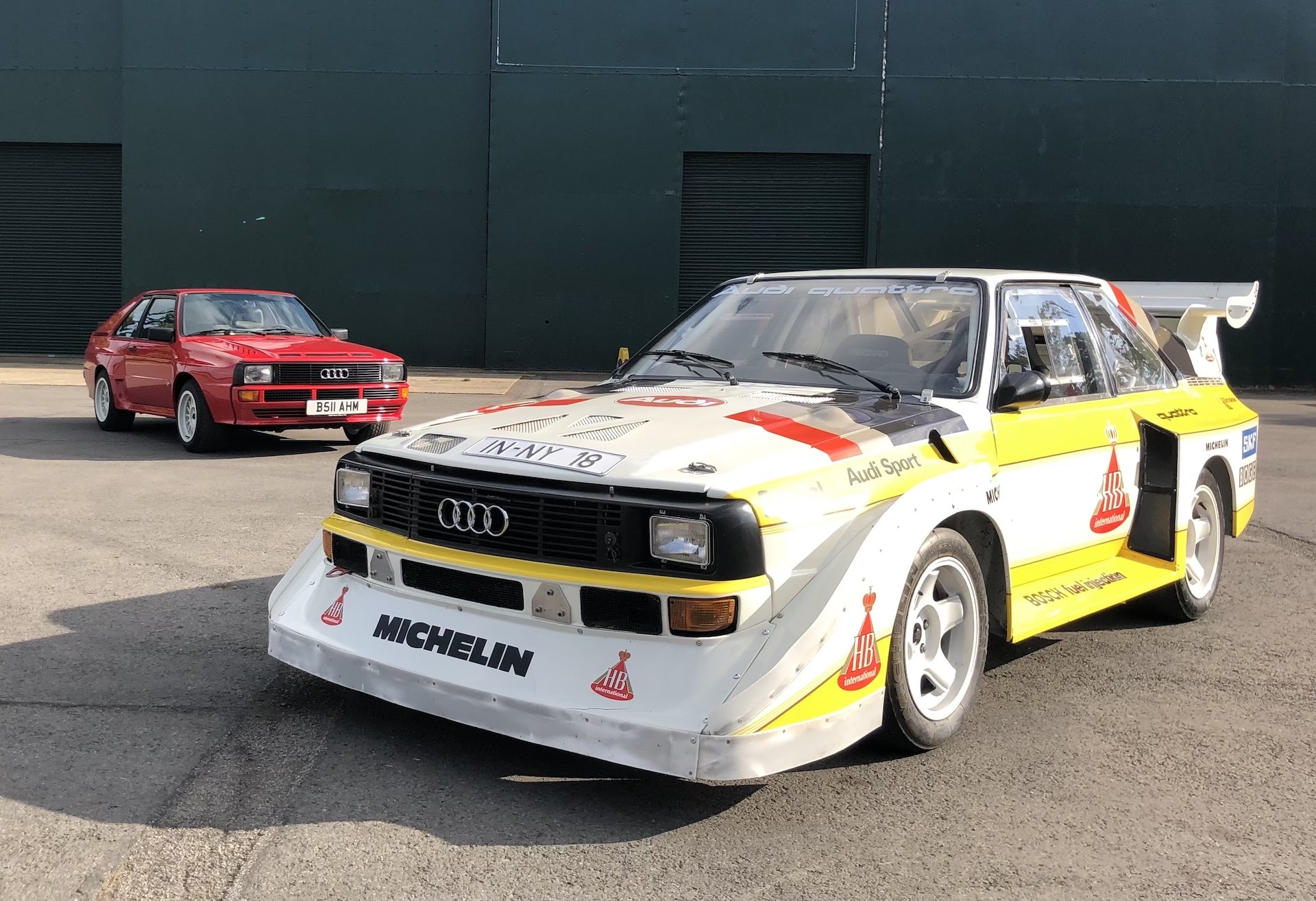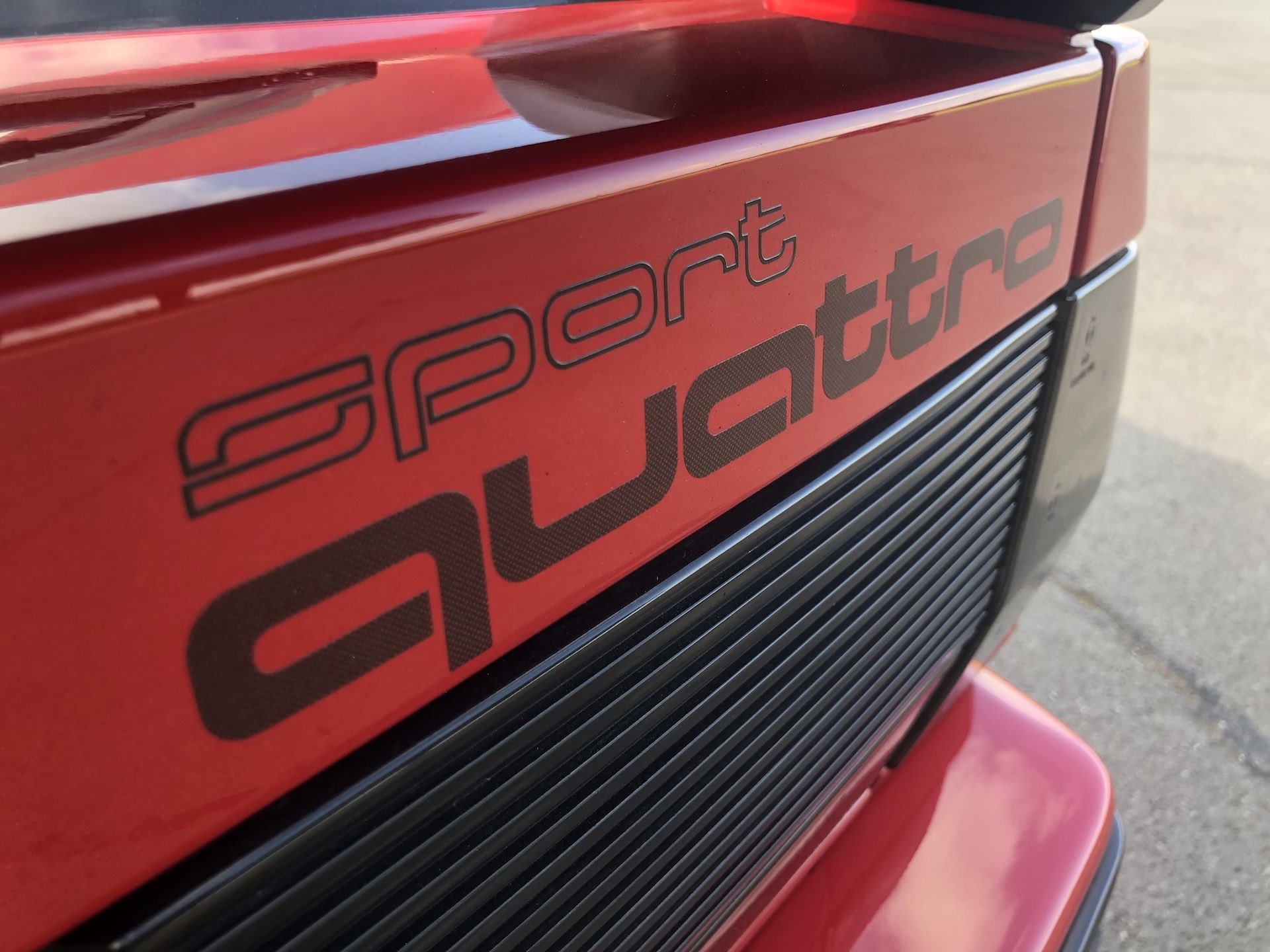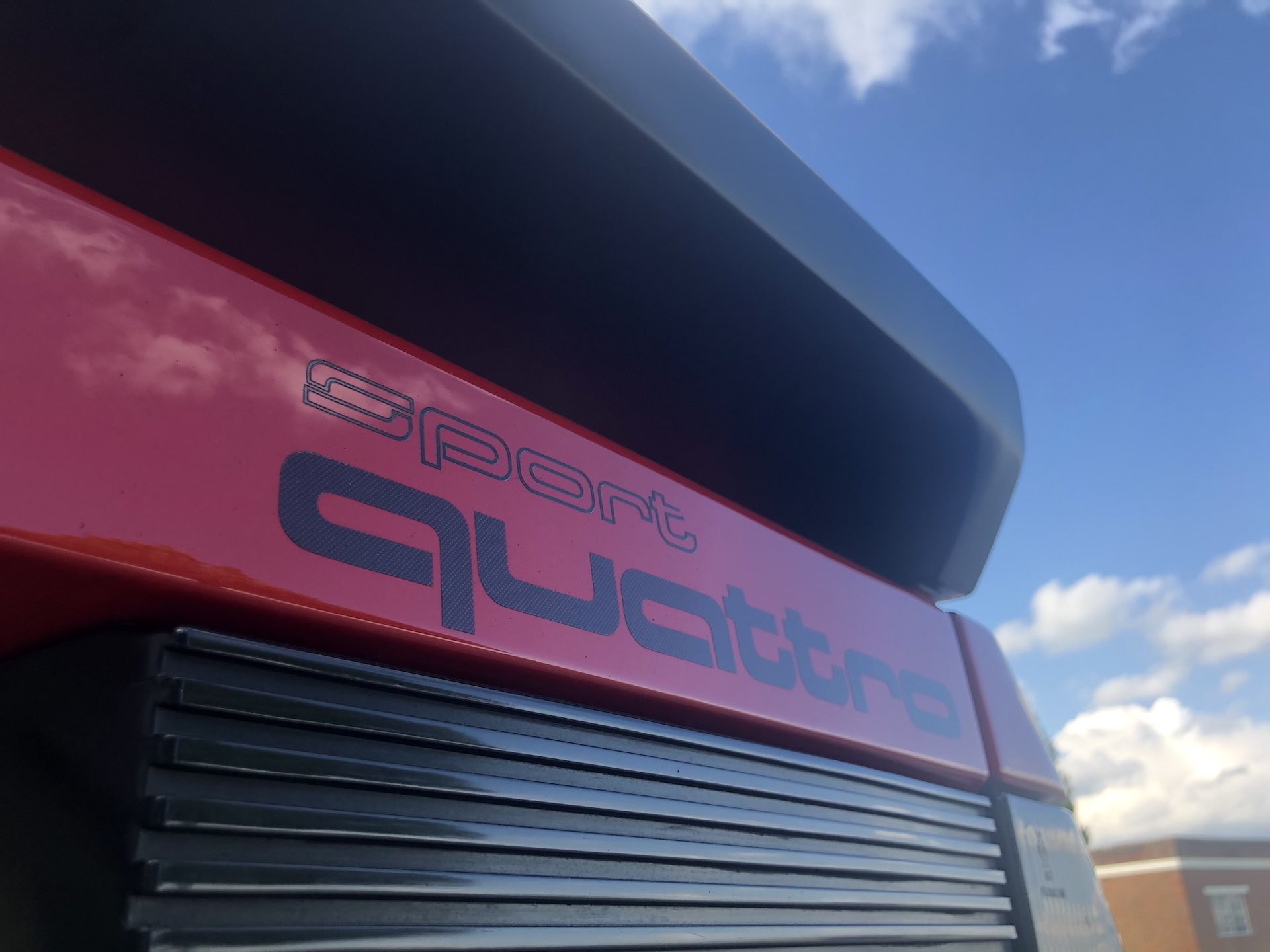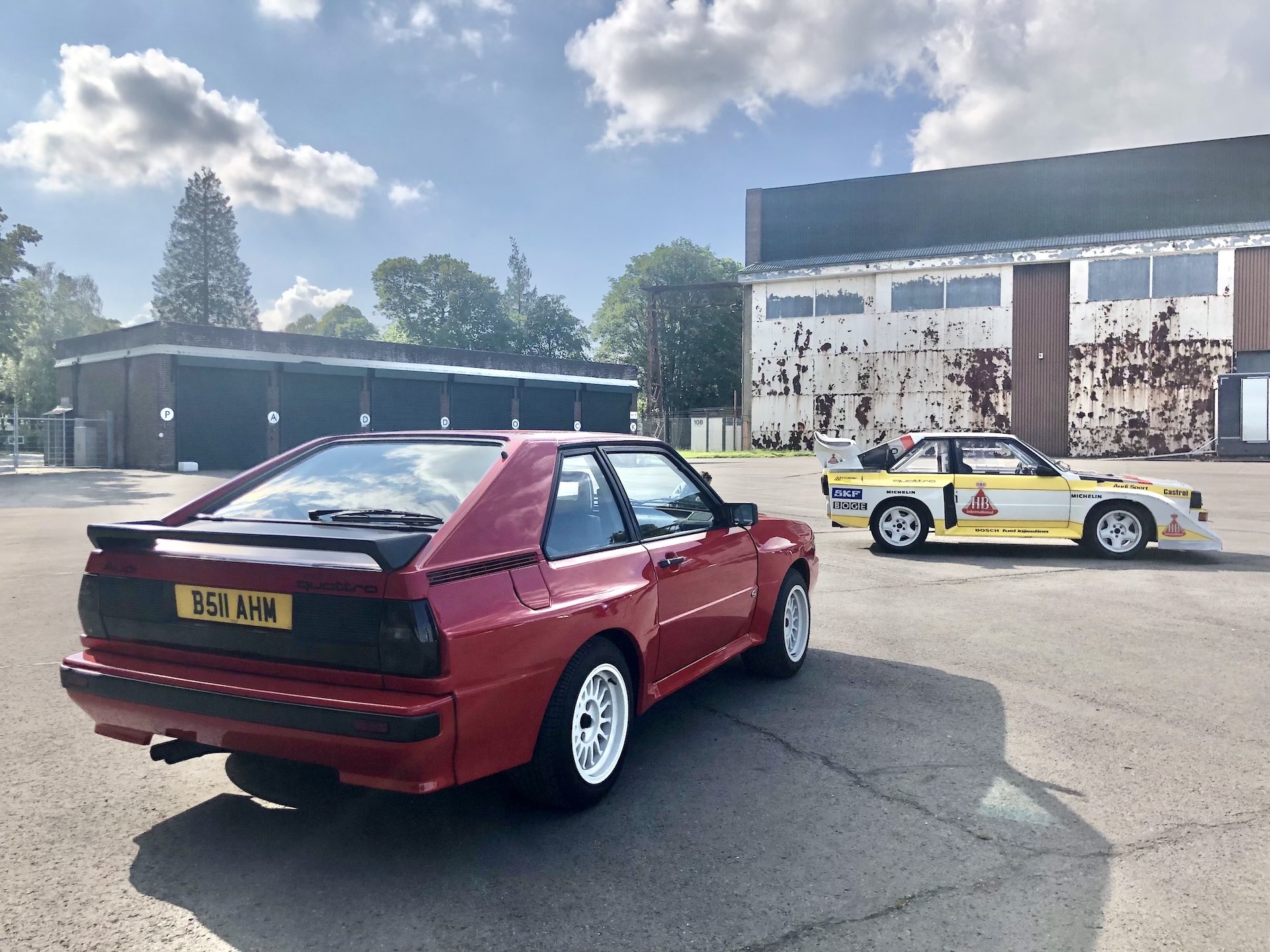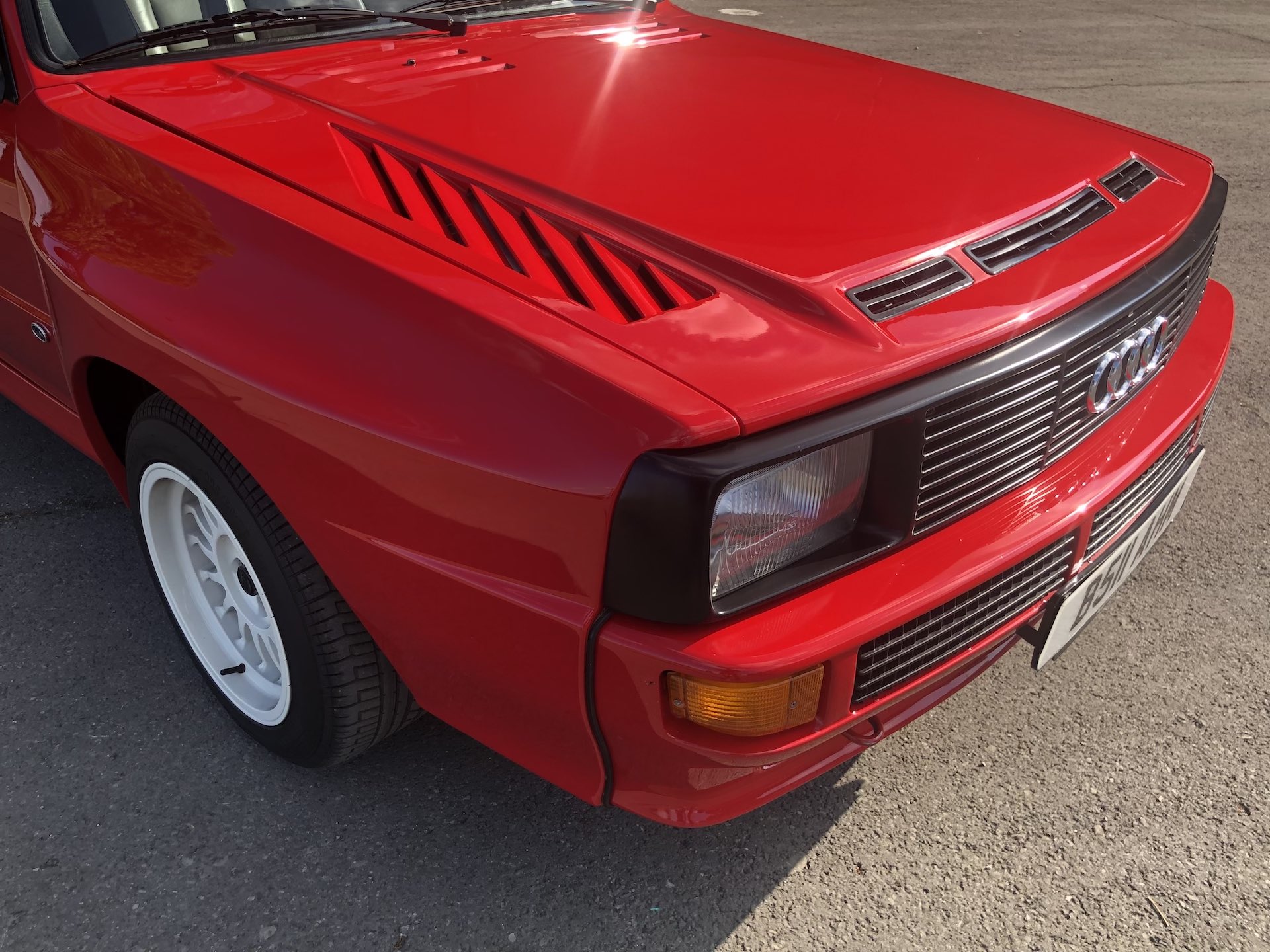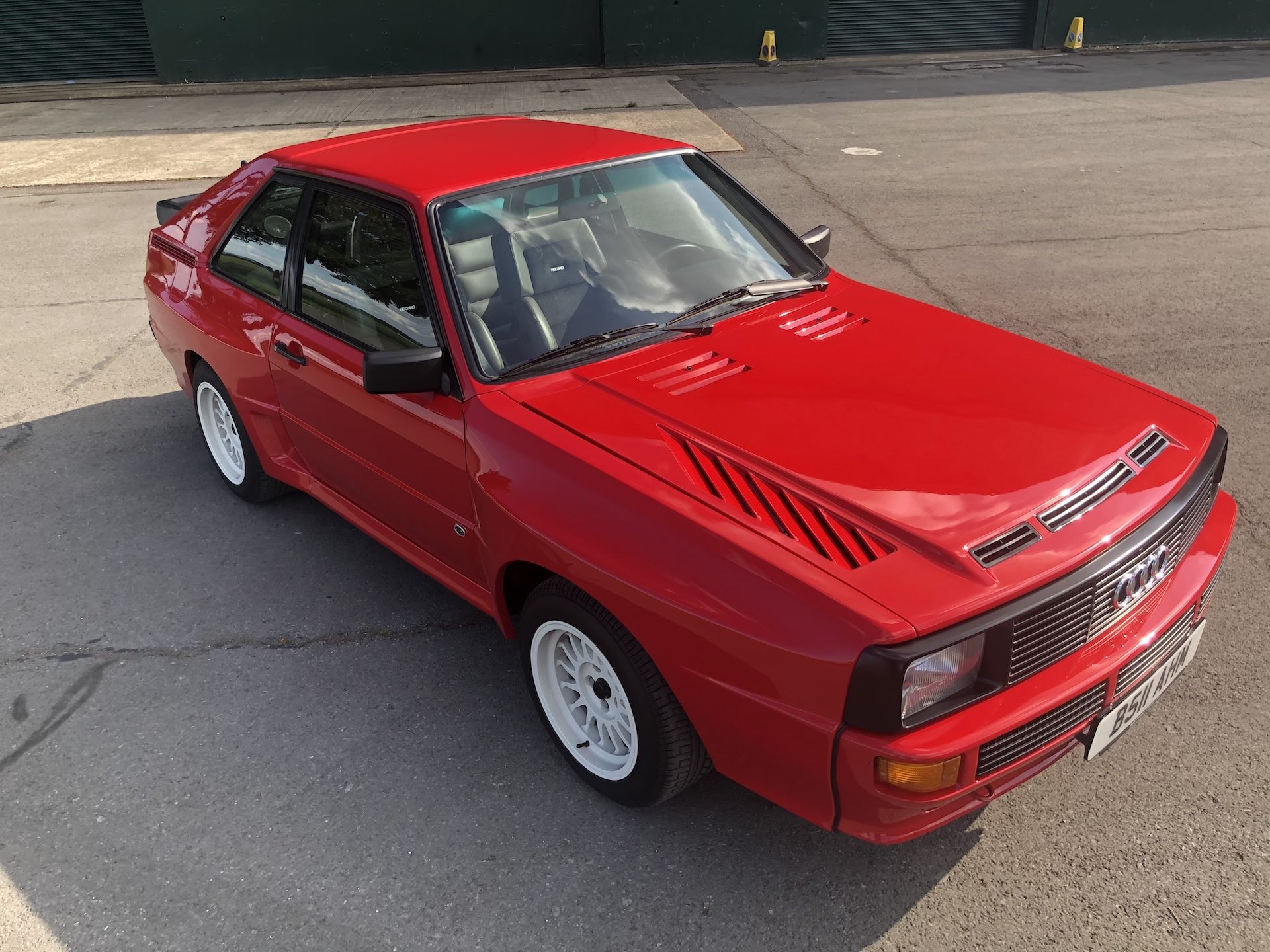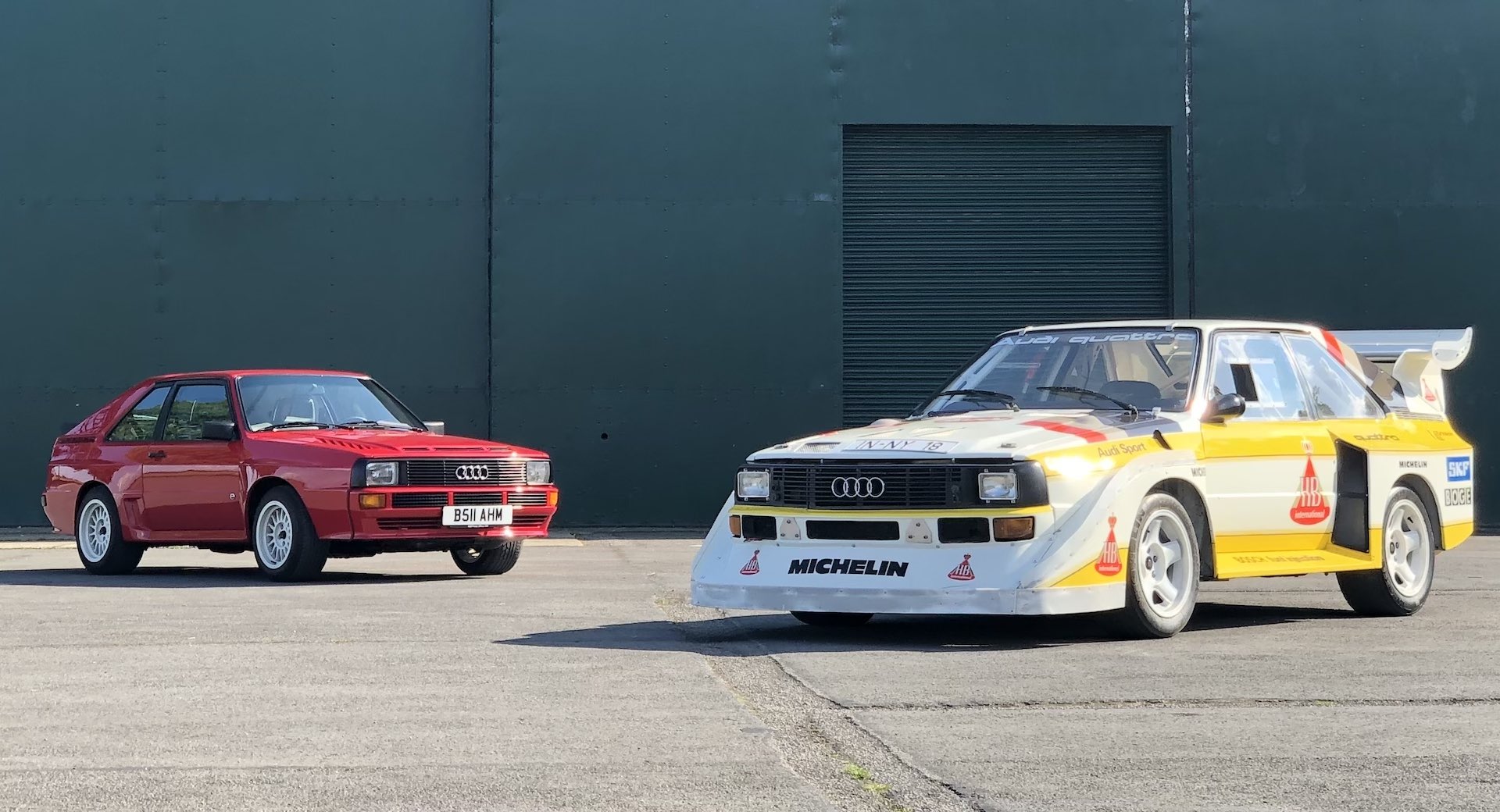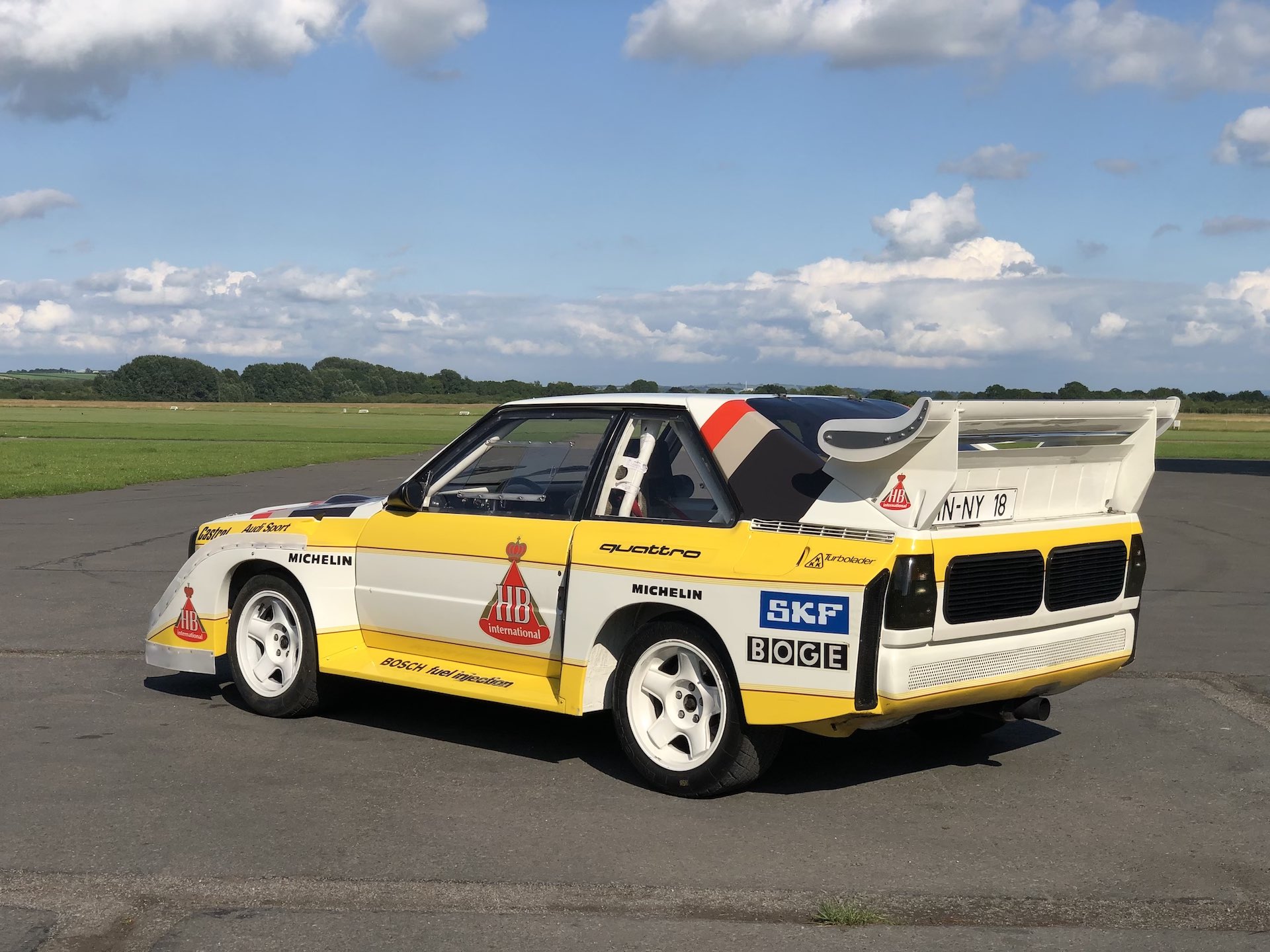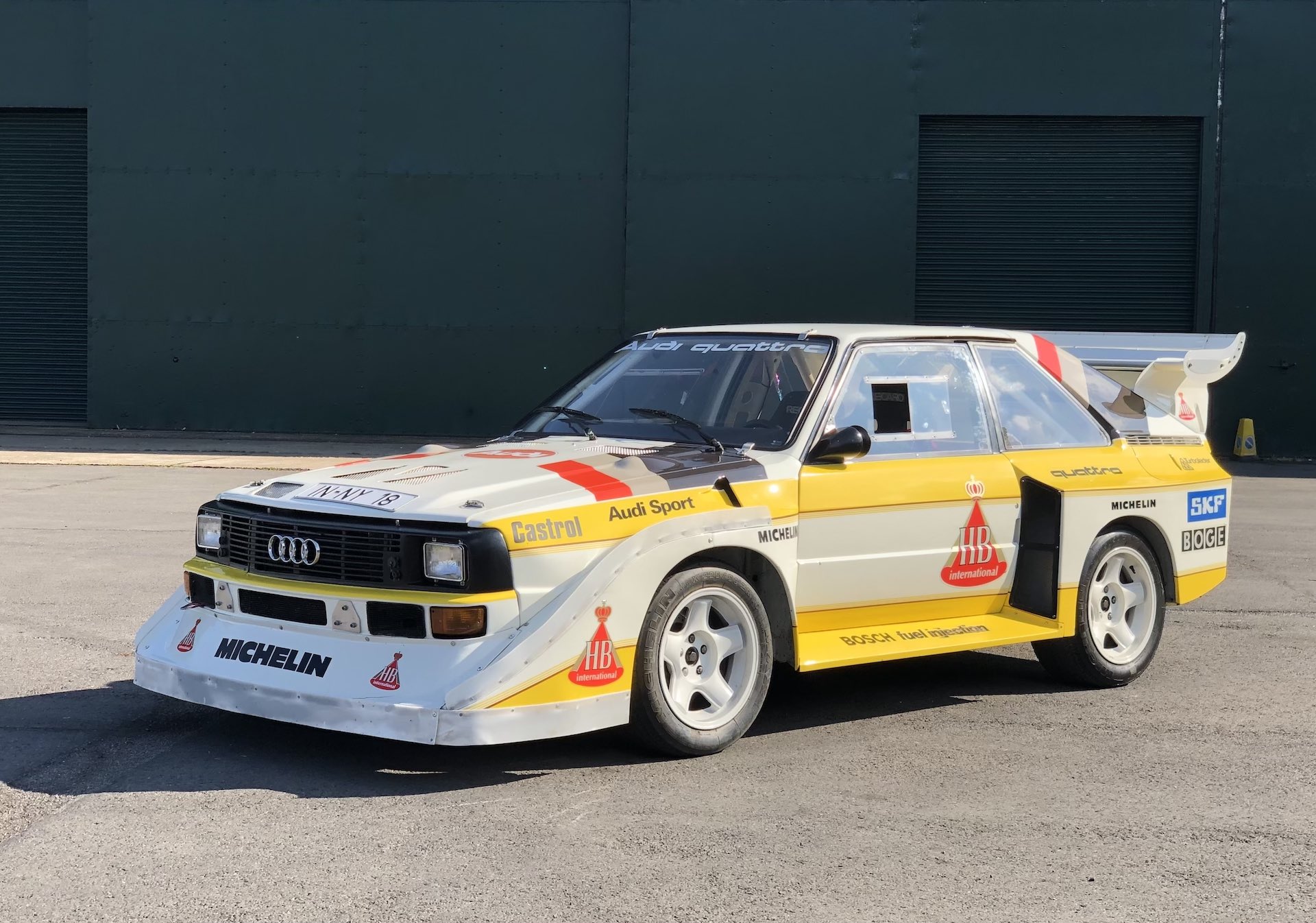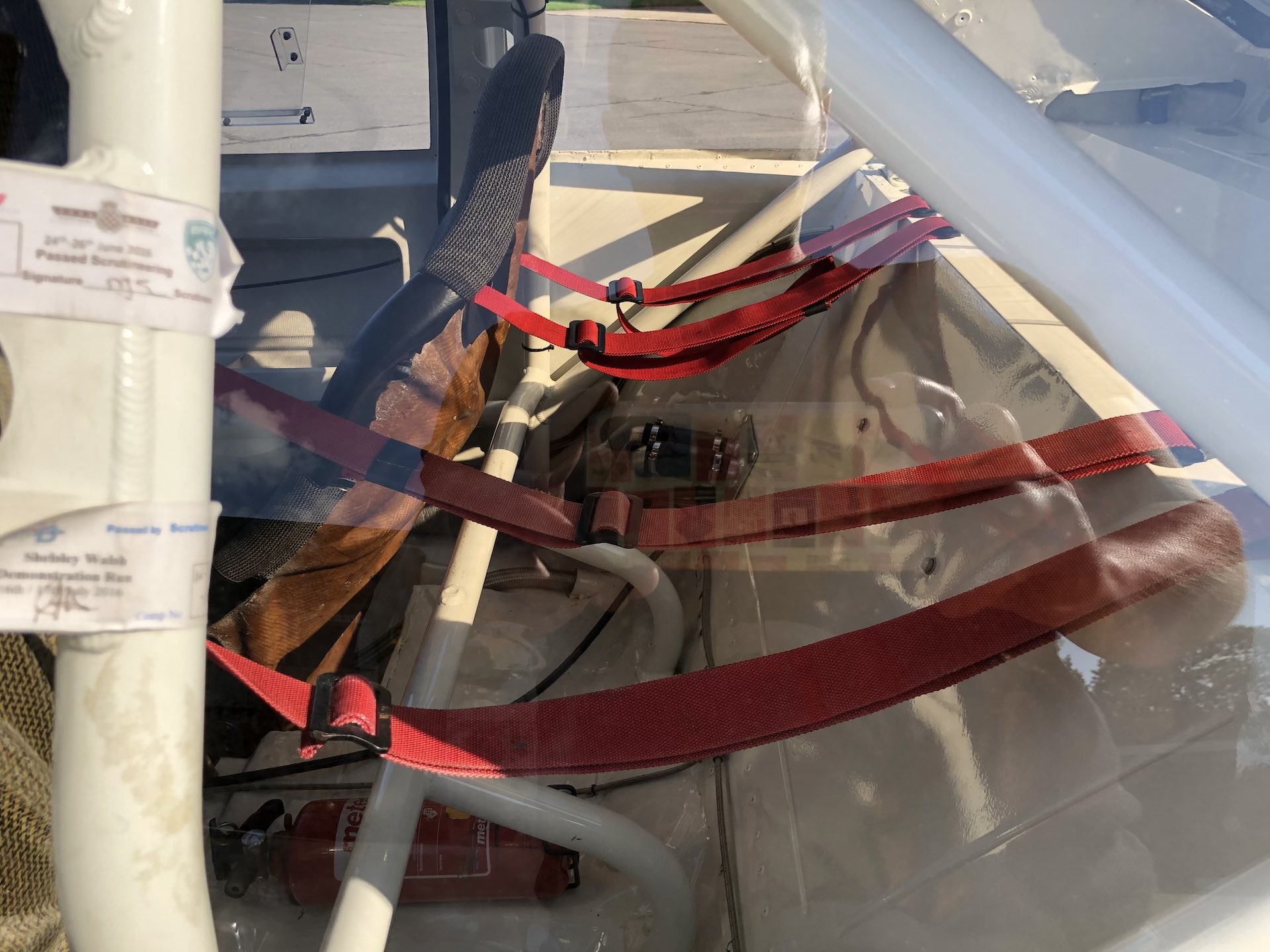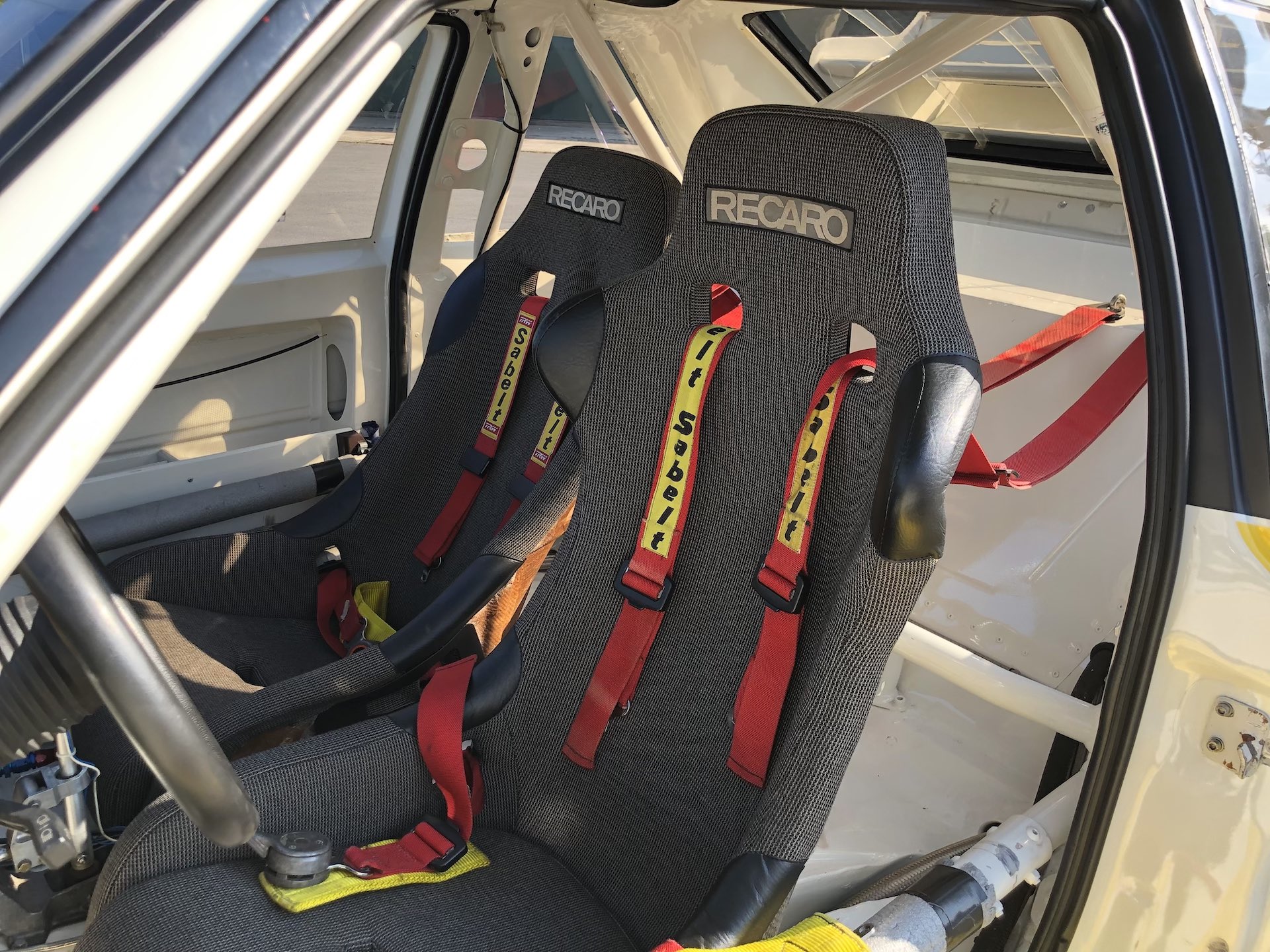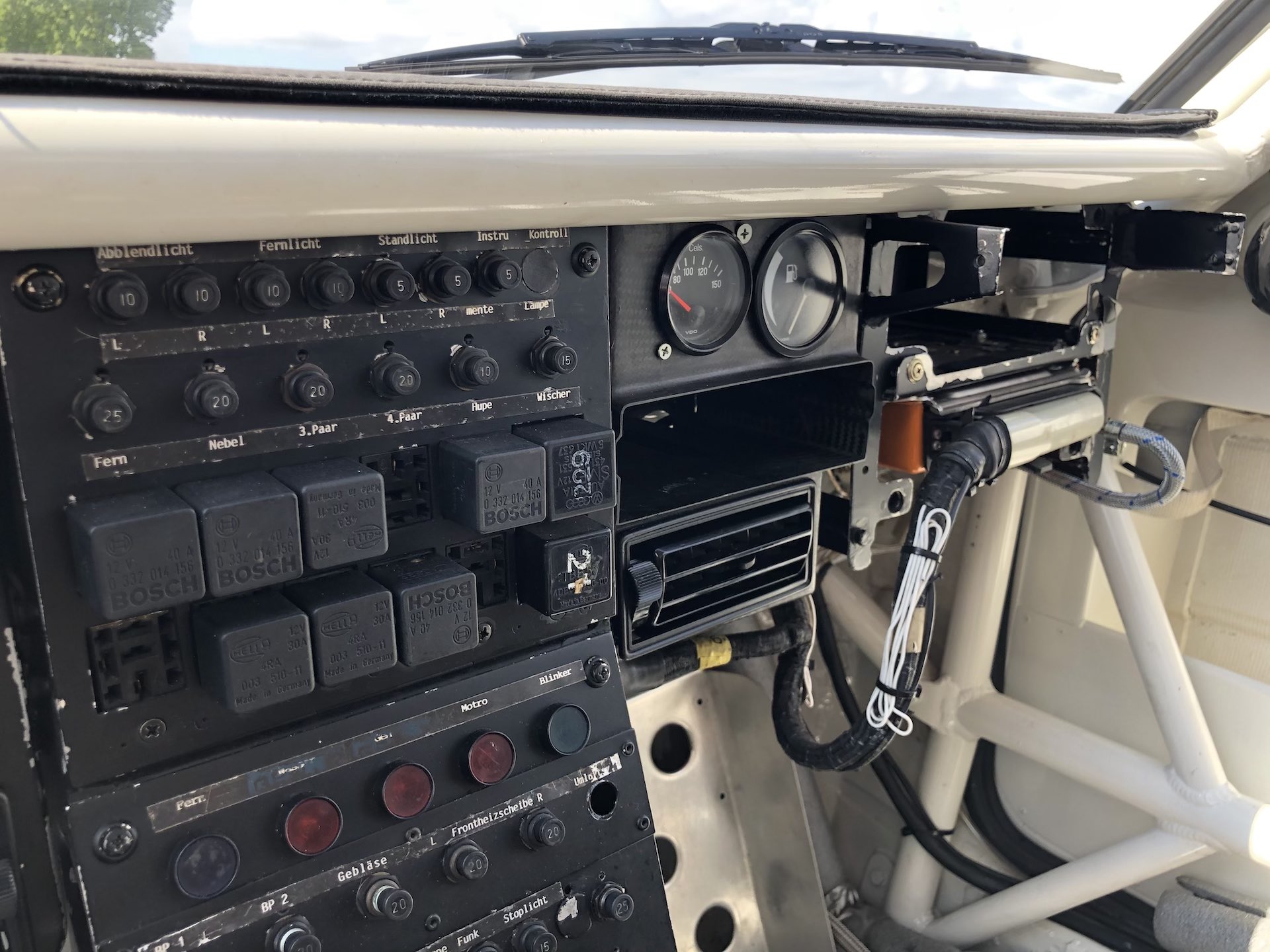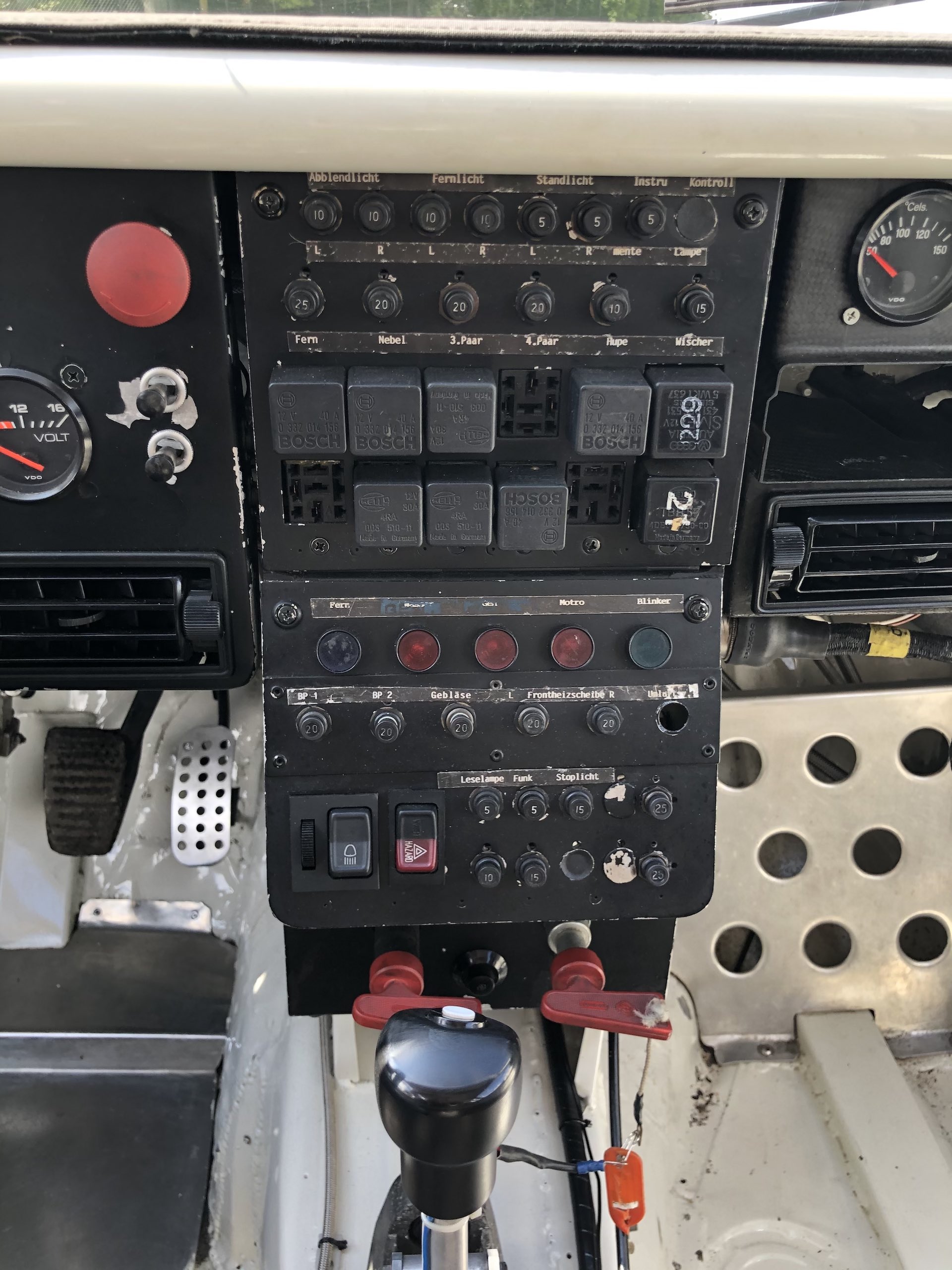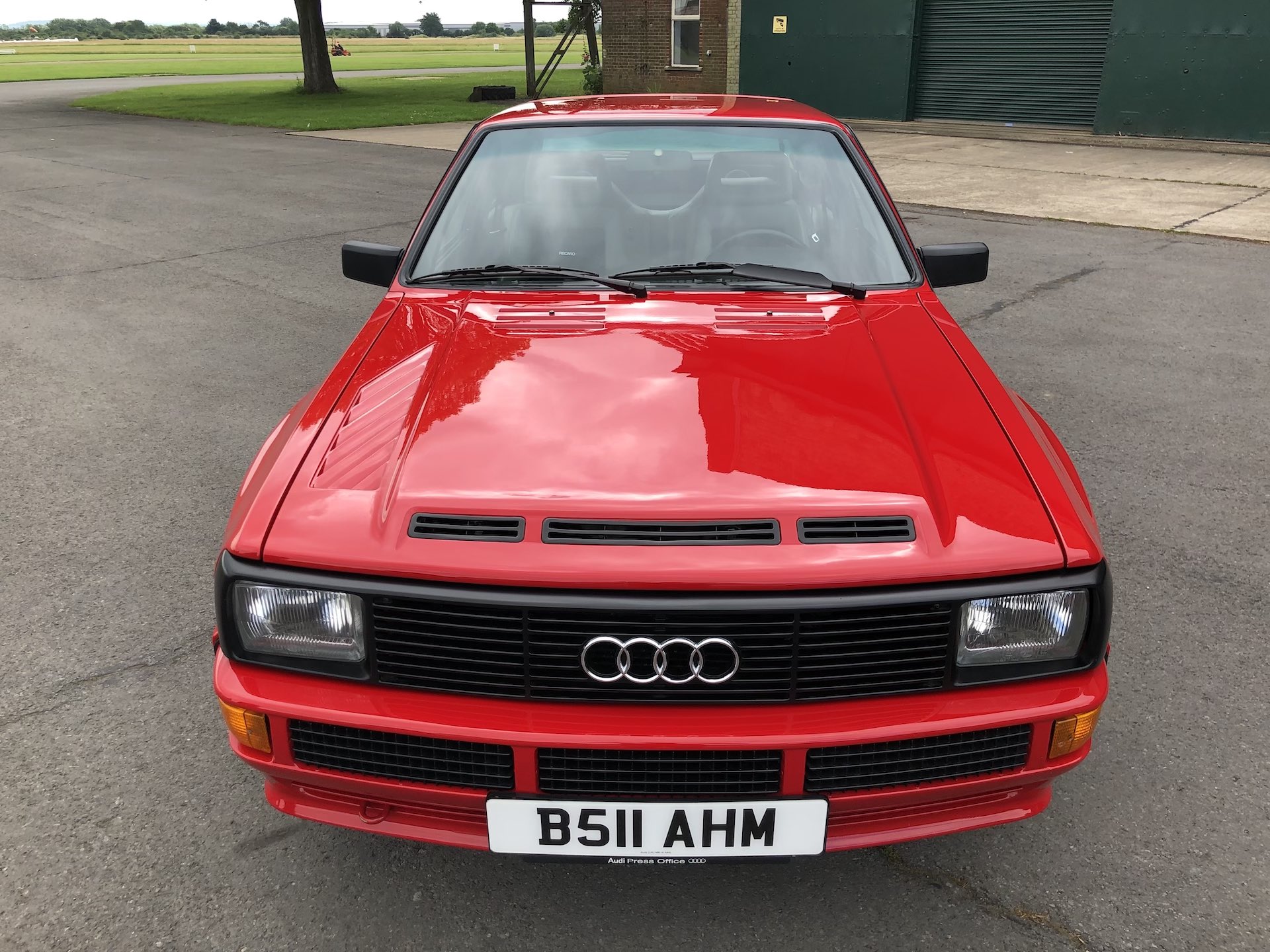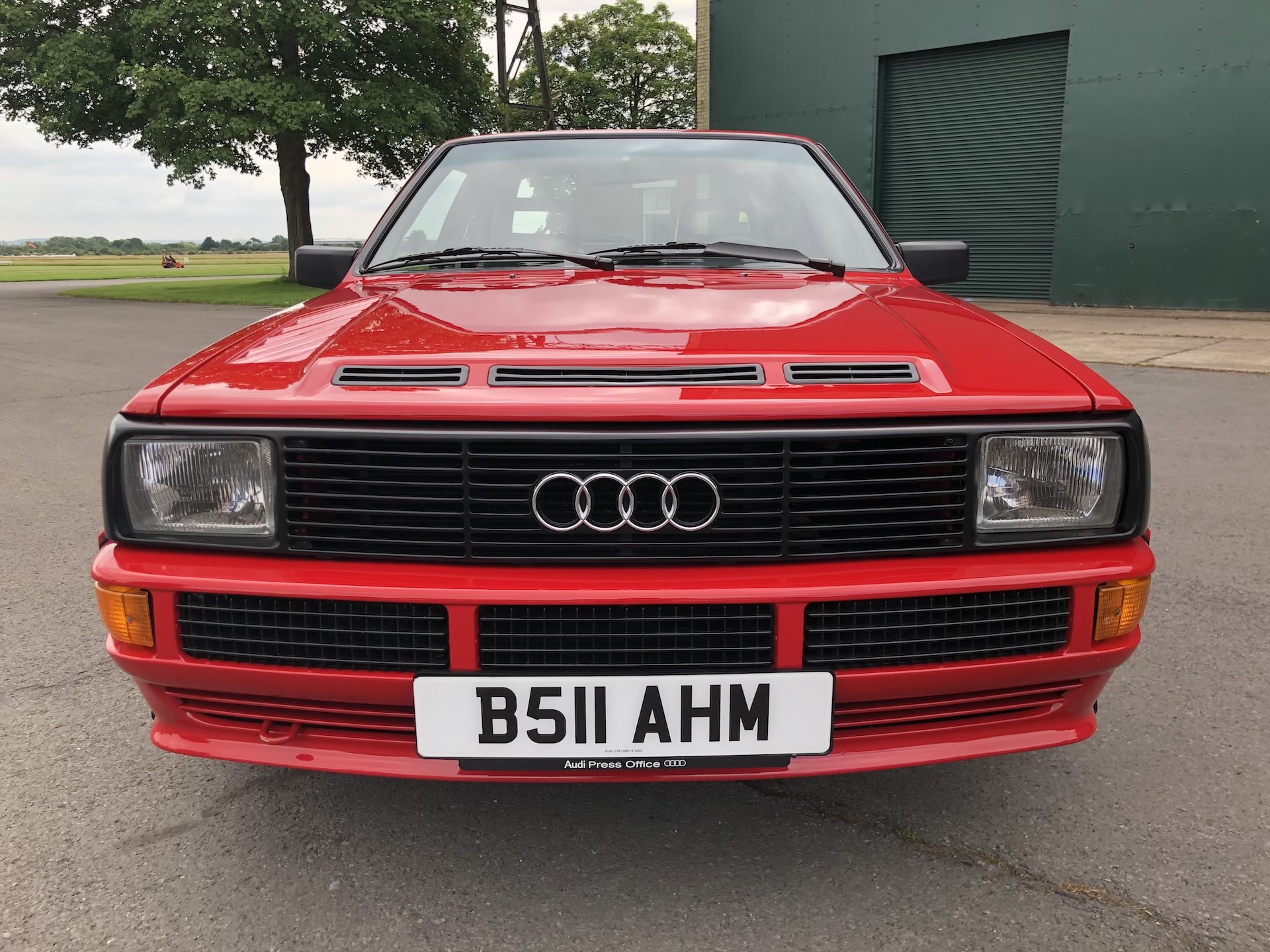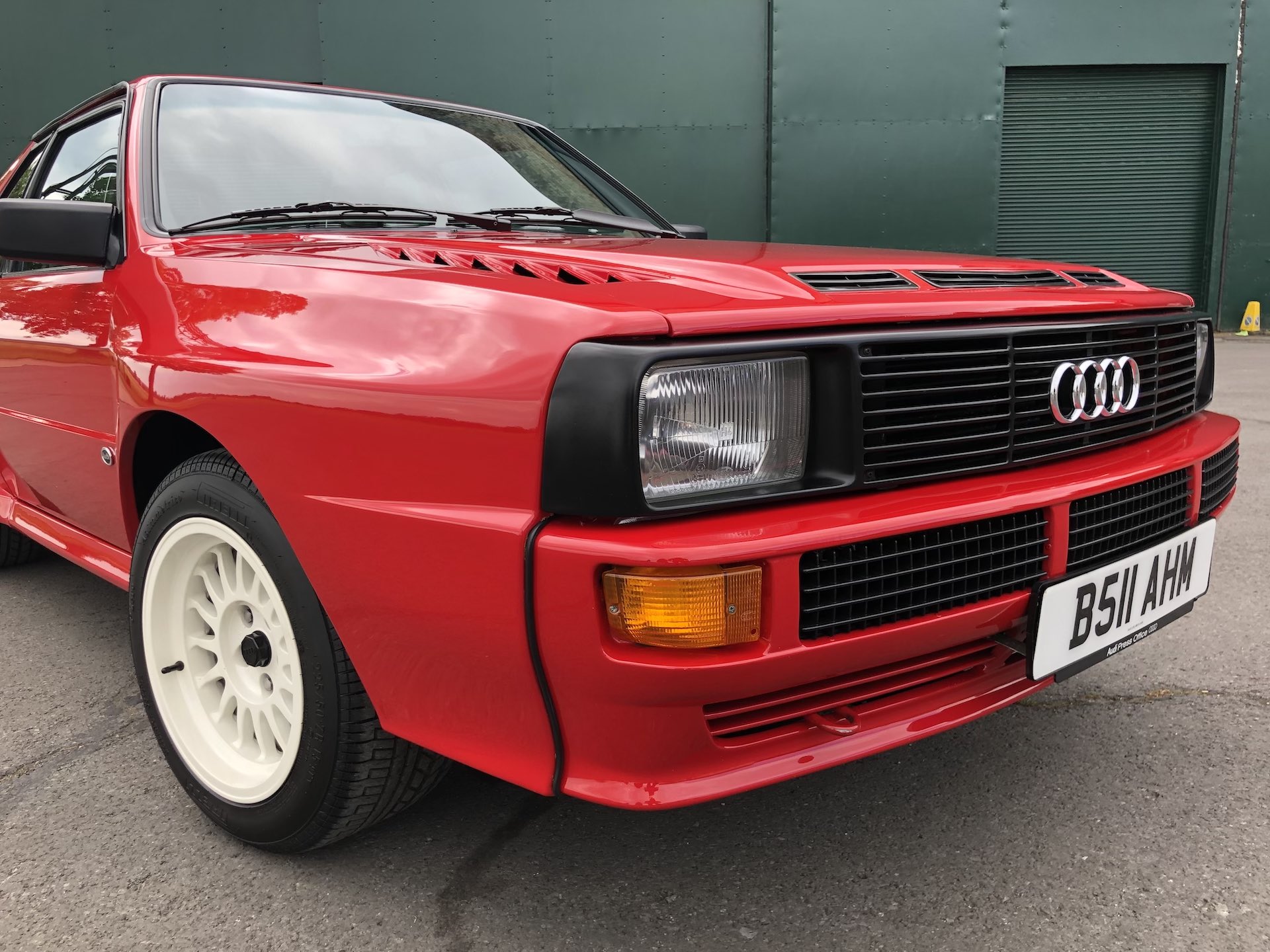The Group B rally era off the early-mid 1980s gave us a multitude of crazy machines including the Lancia Delta S4, Peugeot 205 T16 and Ford RS200, all of which were purpose built to capture WRC glory.
But I reckon when someone mentions Group B it’s the Audi Sport Quattro that most likely jumps to the front of your mind (jumping 20ft through the air at the 1000 Lakes Rally while it’s at it).
Most of us know at least the bare bones of the Quattro story. In the late 1970s, Audi saw potential in Volkswagen’s Iltis off-roader and applied its four-wheel drive technology to a new coupe based on the 80 sedan. In its inaugural outing at the Jänner Rallye in Austria a Quattro finished 20 minutes ahead of its nearest rival. And by the end of the 1982 season, Audi had captured both the Drivers and Manufacturers Championships.
But while it’s true the Quattro’s turbo-AWD combo changed the course of rallying, it was at its heart still based on a road car, and modified for competition under the old Group 4 regs. Audi’s problem was that a new breed of bespoke racers like the Peugeot 205 T16 and Lancia Delta S4 were on the horizon, each taking advantage of the new Group B rules that allowed carmakers to homologate rally cars by building just 200 examples.
Related: E-Legend EL1 Is An All-Electric Audi Sport Quattro Hommage With 804 HP
Audi took advantage of those same rules but instead of starting with a clean sheet of paper, used the opportunity to radically modify the Quattro. The result was the Sport Quattro S1, and the Sport Quattro road car built by Audi to homologate it. And I recently got the chance to drive both.
Let’s start with the road car first, because, well, frankly, the Group B machine looks mildly terrifying and its probably best to build up to these kinds of things. From certain angles, like the rear, you could mistake the Sport Quattro street car for any standard Quattro. But if the vented hood (since referenced on cars like the modern A1) doesn’t give the game away, the crazy wheelbase reduction will.
Audi’s engineers chopped a massive 12.6 inches (320 mm) from the floorpan to help kill the understeer in the standard Quattro caused by having that inline five slung out beyond the front wheels, then swapped the front windscreen for the more upright one from the 80 sedan to minimize reflections, addressing another driver complaint. And now every panel except the doors was made from Kevlar or fiberglass.
The new screen rake is immediately obvious from the driving seat, and if you glance behind you, you’ll see that the rear seats are purely cosmetic due to that wheelbase reduction. But for the most part this looks like any regular Quattro of the period. Doesn’t go like one, though. With a new five-valve head the 2.1-liter motor made 302 hp, more than 100 up on stock, and enough to slash the zero to 62 mph time by around 2 seconds, to 4.8. Back in 1984 that was supercar-grade performance, and even by modern standards it feels pretty strong when the turbo spools up in third gear.
But then I try the same thing in the Group B car and it makes the road one feel like it must have about 30 hp. This is a Sport Quattro S1 E2, an evolution introduced for 1985 with various mods, including an optional early form of dual-clutch transmission, and most obviously, a wild aero kit.
Related: Ken Block Signs Up With Audi To Work On Electric Cars
Stand on the gas in the black, yellow and white E2 and it’ll redefine your concept of turbo lag. It’s like pulling the pin on a grenade: you know there’s an explosion coming but it seems to take an age to arrive and still manages to take you by surprise when it does, unleashing a flurry of torque steer even in a straight line and leaving your right arm racing the rev counter needle to see if you can grab the next gear before it bah-bah-bahs off the limiter. And though it feels as urgent as a 1000 hp hypercar from where I’m sitting, this car has actually been down-tuned to around 450 hp. In the Group B days it could run at almost 600, and when Walter Röhrl broke the Pikes Peak hillclimb record in 1987, his E2 was rumored to be pushing out 750 horses.
I’d naively expected the rally version to feel vaguely recognizable as a Quattro in the way a modern GT3 racing car still feels linked to its road car cousin, which probably ranks somewhere on a global list of gross underestimations close to soldiers rushing to enlist for WWI because they were sure it would all be done with in a couple of weeks.
In fact, the two feel so different, I’m not even sure I’d recognize the connection if you led me to the Group B machine’s bucket seat blindfolded then whipped away the cover and tossed me the keys. There’s no evidence of the road car’s dashboard, and none of its sloppy gearchange, either. Instead, everything from the steering to the shift, and especially the differentials, feels incredibly tight.
Where the road car is merely a better version of the standard Quattro, and no harder to drive, the rally version needs mountains of commitment to get the best out of it. I’ll confess I found it difficult to get my head around the the turbo lag through corners. It’s no good cranking open the throttle on the apex of a corner, or even before it to set the car up, because the boost won’t arrive until you’re halfway along the next straight. The trick seems to be to pop an entire jar full of brave pills and get the thing boosting on the approach to the corner, when your brain is telling you you’re on the wrong pedal. Walter Röhrl has said of the S1 that it was car in which you had to think two corners ahead.
https://youtu.be/kHUASOd5gF8
Old, hard tires and a paved surface probably don’t show the Quattro off in its best light, either. The Audi was always better on dirt and gravel, as shown in the archive footage above. But ultimately, it wasn’t good enough. Audi introduced the new Quattro S1 alongside the old long wheelbase Quattro right at the very end of that winning 1984 season, then for 1986 it released the S1 E2 with the big spoilers we’ve got here. But neither was strong enough to keep the Peugeot 205 T16 from the top spot.
The mid-engined T16 took seven wins our of 12 to the Audi’s one to seal the 1985 season, and the Quattro was faring no better in the 1986 season that was tragically cut short after the deaths of Lancia driver Henri Toivenen and his co-driver Sergio Cresto in Corsica, as well as three spectators at Rally Portugal, that brought a premature end to the Group B era. Could things have been different if Audi hadn’t canned the mid-engined project it was developing so secretly even the company’s bosses didn’t know about it? We’ll never know.




